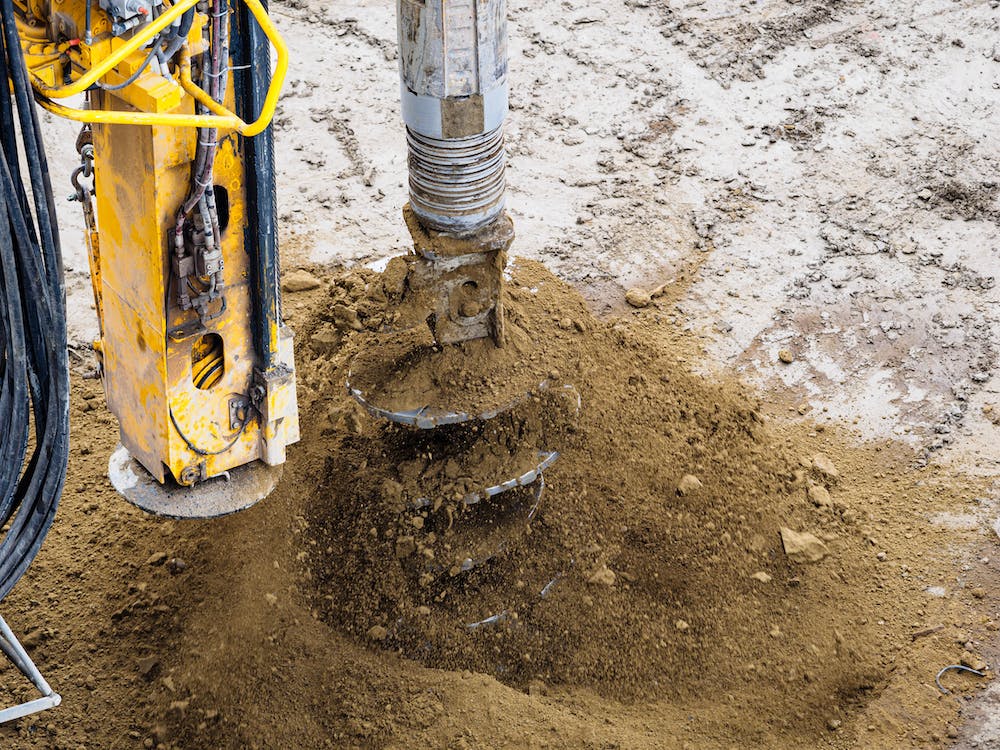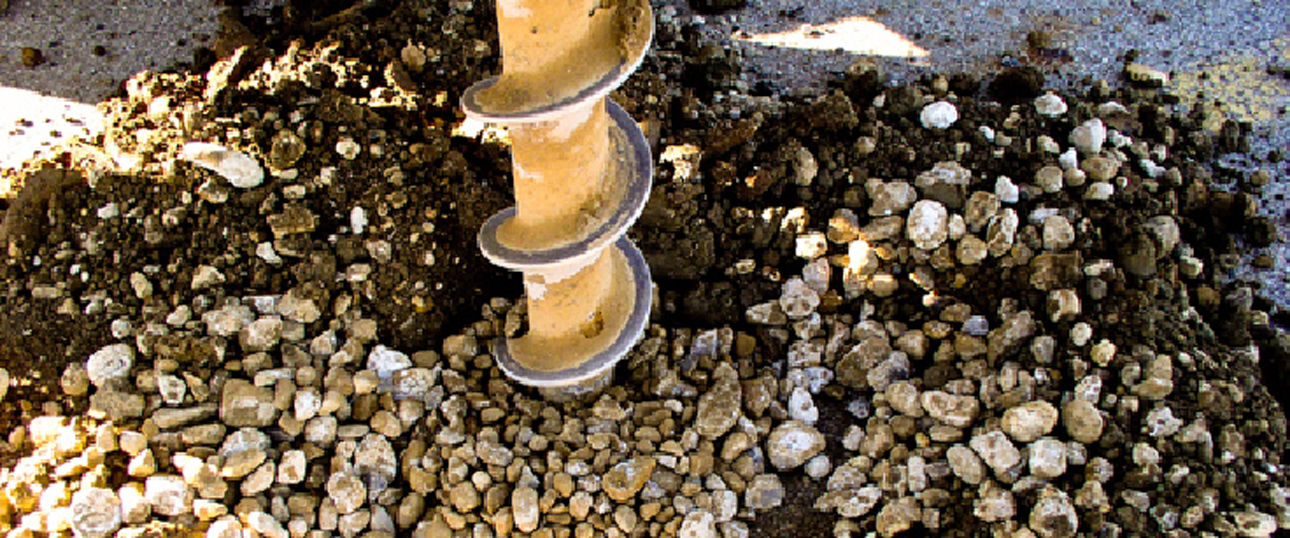Leading Geotechnical Companies in South Africa: Who You Must Know
Exploring the Fundamental Principles and Applications of Geotechnical Design for Sustainable Facilities Growth
The intersection of geotechnical design and lasting facilities development provides a compelling opportunity to improve both design efficiency and ecological duty. By understanding crucial concepts such as dirt auto mechanics, website characterization, and foundation layout approaches, engineers can create solutions that are not only efficient yet also minimize ecological impacts. The integration of sustainable practices right into geotechnical jobs raises questions about source usage and long-term strength. As we examine these ideas, the ramifications for future infrastructure projects necessitate careful consideration, specifically in an age progressively specified by ecological obstacles.
Trick Concepts of Geotechnical Design
Comprehending the key concepts of geotechnical design is necessary for developing lasting facilities (geotechnical specialist). This technique focuses on the interaction between dirt, rock, and structures, playing a critical duty in the security and efficiency of engineering projects. The foremost principle is the analysis of subsurface conditions through site investigations, which provide valuable info regarding soil residential or commercial properties, stratification, and groundwater degrees
One more crucial principle is the application of efficient tension theory, which aids designers comprehend exactly how dirt actions changes under differing lots. This understanding is vital for examining the bearing capacity of structures and guaranteeing that frameworks can stand up to both static and vibrant pressures.
Furthermore, the principles of soil-structure communication and incline security are integral to geotechnical style, as they educate decisions on the placement and design of maintaining embankments, slopes, and wall surfaces.
Lastly, geotechnical engineers need to think about sustainability by advertising using in your area sourced materials, reducing environmental impact, and optimizing designs for long life. By adhering to these principles, geotechnical design contributes considerably to the production of lasting and resistant facilities that meets the needs of society while protecting the setting.
Dirt Mechanics and Its Value
Soil technicians functions as the foundation of geotechnical design, giving the clinical principles required to evaluate the habits of soil under numerous conditions. Understanding soil auto mechanics is critical for forecasting just how dirt will certainly reply to tons, changes in moisture web content, and various other environmental factors. This expertise allows designers to create structures that can withstand the pressures applied by the dirt and guarantee security and safety.
The research study of soil technicians incorporates numerous facets, including dirt category, shear leaks in the structure, compressibility, and stamina. These variables affect the layout of structures, keeping walls, and other geotechnical frameworks, making it necessary to examine dirt buildings accurately. The shear stamina of soil straight affects the security of excavations and inclines, while compressibility influences negotiation predictions for buildings.
In addition, dirt mechanics plays an important function in sustainable infrastructure growth. By comprehending the soil's behavior, designers can reduce environmental effects, maximize material use, and improve the durability of structures. This assimilation of dirt technicians into geotechnical engineering practices not just makes sure safety and security however additionally contributes to the total sustainability of building projects, advertising reliable source administration and ecological stewardship.
Website Characterization Strategies
Efficient website characterization strategies are essential for gathering essential details regarding subsurface conditions before building - geotechnical engineer description. These strategies offer valuable understandings into soil homes, rock developments, groundwater levels, and potential geohazards, thereby informing job style and mitigating risks
One commonly used technique is drilling, which permits direct sampling of soil and rock layers. This can be matched by in-situ screening, such as Standard Infiltration Tests (SPT) and Cone Penetration Examinations (CPT), to assess soil toughness and stratification. Geophysical methods, including seismic refraction and electric resistivity studies, make it possible for non-invasive analysis of subsurface products and frameworks, using i thought about this a wider point of view on geological problems.
Furthermore, laboratory screening plays an important function in analyzing browse around these guys soil samples gotten from boring. Examinations such as grain size analysis, Atterberg limits, and triaxial shear tests produce critical data on dirt habits under numerous loading problems.
Including these site characterization strategies not only enhances the understanding of website conditions but likewise sustains sustainable facilities development by ensuring that tasks are created with suitable safety and security margins and efficiency specs. Hence, a comprehensive website characterization is vital for educated decision-making in geotechnical design.
Structure Style Techniques
Foundation layout methods are crucial for guaranteeing the security and long life of frameworks in different geotechnical contexts. These methods start with a detailed website investigation, which consists of dirt screening and analysis to determine the physical properties of the subsoil. Comprehending dirt behavior under lots is important for choosing the appropriate structure kind, whether superficial or deep.
Shallow foundations, such as spread footings or mat structures, are generally utilized when suitable dirt layers are readily available near the surface. On the other hand, deep foundations, such as stacks or drilled shafts, are made use of in situations where surface area dirts are insufficient to sustain architectural lots.

Sustainable Practices in Geotechnical Design
The integration of lasting methods in geotechnical engineering plays a crucial function in boosting the environmental and economic stability of framework tasks. By focusing on source effectiveness and lessening environmental effects, engineers can add to the growth of durable framework systems.
One secret lasting practice entails making use of different materials, such as commercial byproducts and recycled accumulations, which can lower the need for virgin resources and lower carbon exhausts. In addition, soil stablizing strategies, consisting of the application of bioengineering techniques, boost dirt residential properties while promoting ecological balance.
Additionally, the application of Your Domain Name innovative geotechnical modeling and surveillance modern technologies enables far better prediction and monitoring of ground conditions, causing enhanced layout remedies and resource use. These innovations likewise help with the analysis of lasting performance, ensuring that structures stay risk-free and functional over their life expectancy.

Conclusion
In verdict, the concepts and applications of geotechnical engineering play an important function in sustainable infrastructure development. Emphasizing soil auto mechanics, site characterization, and cutting-edge structure style techniques improves the strength and efficiency of frameworks.
By recognizing crucial principles such as dirt technicians, site characterization, and structure style approaches, designers can create remedies that are not only effective yet also minimize ecological impacts.Soil technicians serves as the foundation of geotechnical engineering, supplying the scientific concepts needed to analyze the habits of soil under numerous conditions. Comprehending dirt auto mechanics is crucial for predicting exactly how dirt will respond to tons, modifications in dampness web content, and other environmental aspects.The research of soil technicians encompasses different elements, consisting of soil category, shear toughness, leaks in the structure, and compressibility. These elements affect the design of structures, keeping wall surfaces, and other geotechnical frameworks, making it necessary to assess dirt buildings precisely.